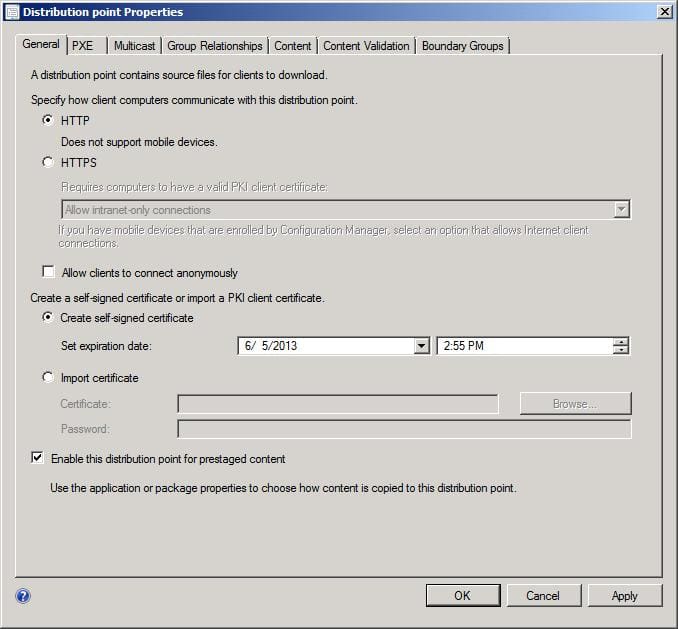I still have a Tandy laptop. It’s not a tablet. It’s not a notebook. It is a LAPtop as in you can sit it on your lap. It runs on four AA batteries, and if I want to upgrade the ram to a screaming 256K I have to find something that looks much like those hex bugs that kids play with. The point is that there was a time when we didn’t have multiple T3s connecting our whole network. Many businesses today still kick it retro style (op, op) with some of their branch locations and inflict these small offices with split Ts or lower.
For those of us who look at our System Center Configuration Manager (SCCM) solutions to deliver with optimum efficiency, we used to look at these branches and openly weep because we knew that even if we put distribution points in the branch, there was going to be some late night pushes so we wouldn’t bring the connection to its knees. There were some ways around it (Nomad from 1E is a fine product on any network then and today), but for the most part you were stuck. With the advent of SCCM 2012 there is a little known feature for just such a case and that is what we will be focusing on- Pre-Staging Content.
Setting up a Pre-Staged distribution point is simple in SCCM 2012 if you know where to look (like most things). First go to the properties of the DP that is to be a Pre-Staged DP. There is a tiny checkbox at the bottom of the General Tab that says, “Enable this Distribution Point for PreStaged Content.” Put a check in there.
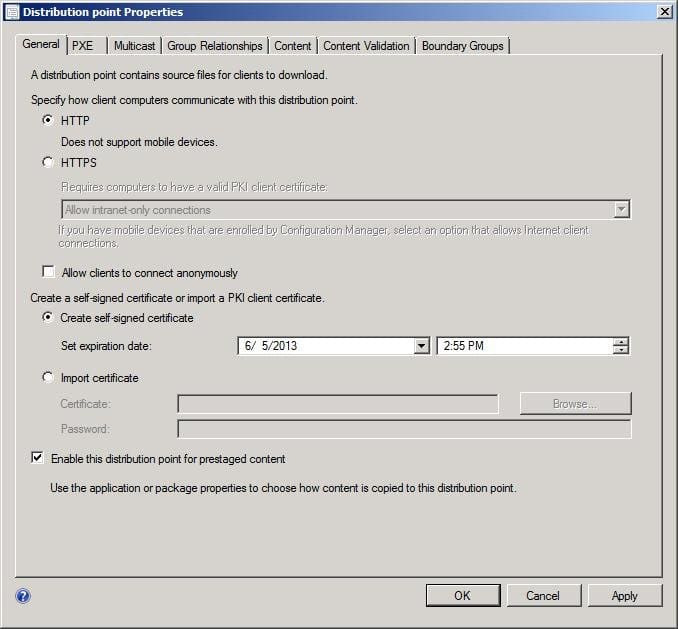
Now that our DP is setup to be a Pre-Staged Content DP any content that is pushed to it will send a signal in the Content Status that says, “Hey, I’m going to stay at the In Progress status until your content is delivered.” Keep this in mind when pushing applications or packages. Speaking of which, you may be asking yourself, “How do I get my content on the DP?” That is an excellent question. Navigate to the Application or Package that you want to Pre-Stage and right click on it. Select Create Prestage Content File to open the wizard (You had to know there was a wizard, right?). Specify the location to create the file and be sure to select the check to Export All Dependencies. Click Next.
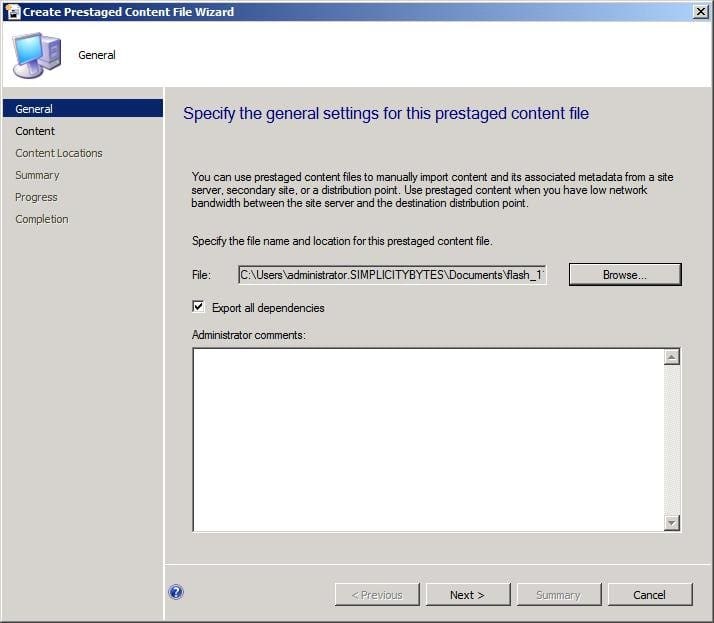
Review the Content of the package and click Next.
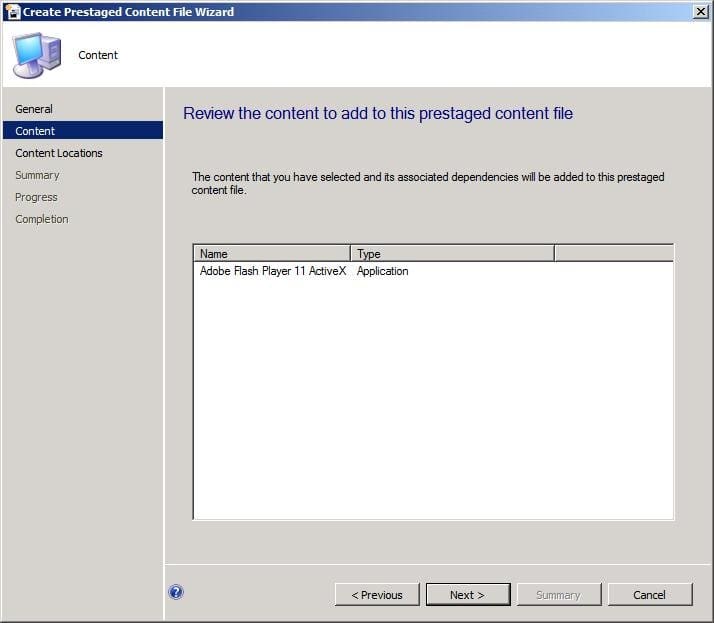
Click on Add to specify the Distribution Point that was marked as Pre-Staged and click Next.
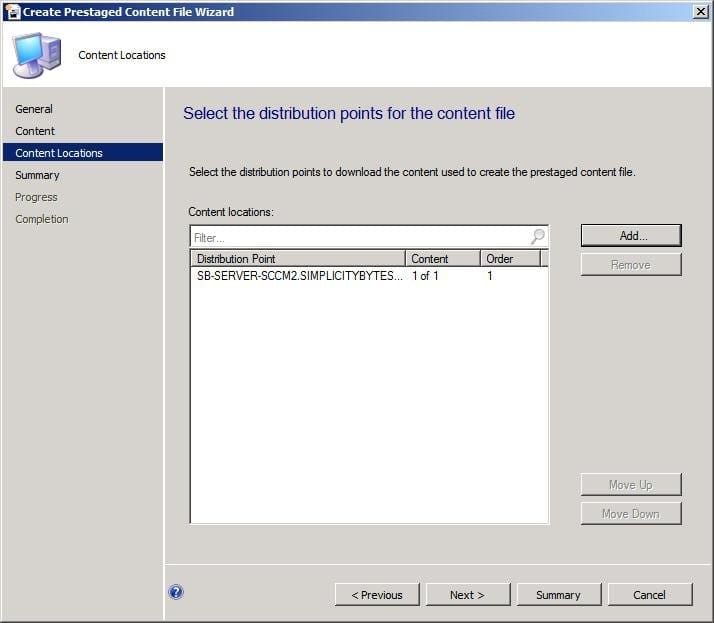
Click Next at Summary and Close at Completion. You should now have a pkgx file at the location you specified that can be copied onto a USB drive, DVD, or whatever your pleasure. Now it’s time for a road trip to our Prestaged Content DP. When you have arrived at the DP in question then it’s now time to get your command line groove on. Under the Configmgr install path under bin\i386 is a command called Extractcontent.exe. Just use this command with the /P parameter which defines the path to the prestaged content file and Configmgr will do the rest.
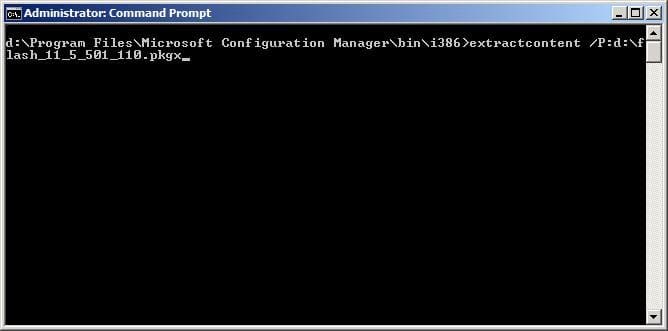
Now the next time one of your Admins uses the expression, “I could walk it there faster than that…” toss them a USB drive send them packing!


